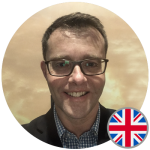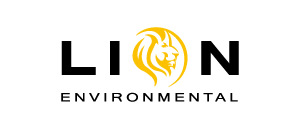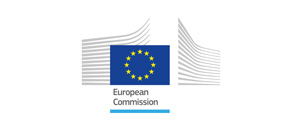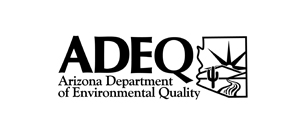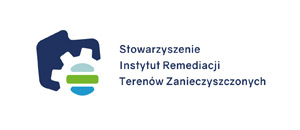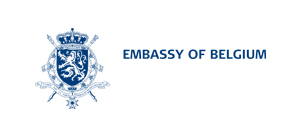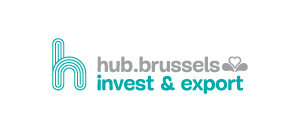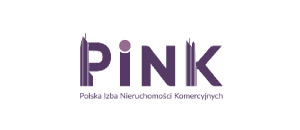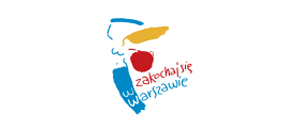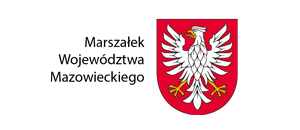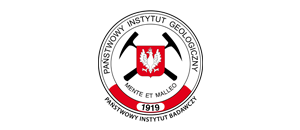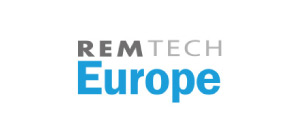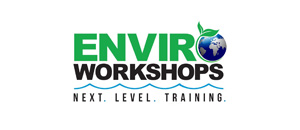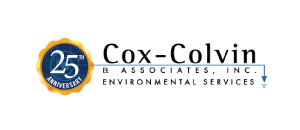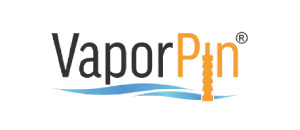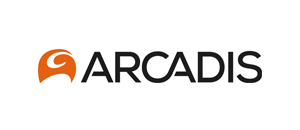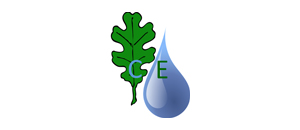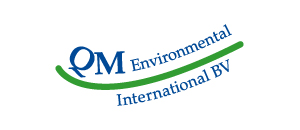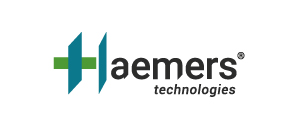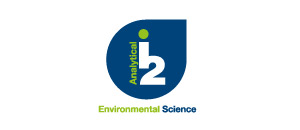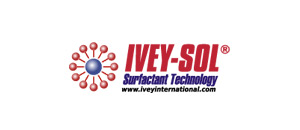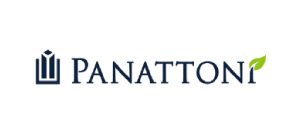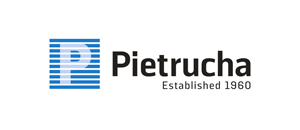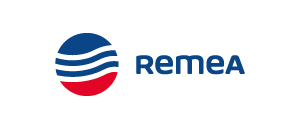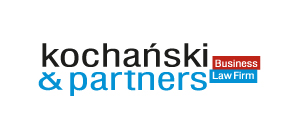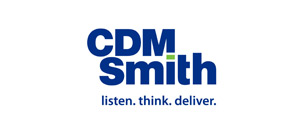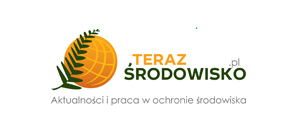Let us leave a healthy earth for future generations
We are becoming more and more ecologically aware. But do we know what is below us? What is the quality of the soil and groundwater, do no harmful vapors from polluted areas migrate to our homes and shops? It is a matter of great importance, the importance of specialists who are able to eliminate soil contamination is growing year by year, and the neutralization of contaminated land is becoming a priority in the environmental strategies of many countries.
The fourth edition of the international conference REMEDy 2021 FOR CONTAMINATED SITES is behind us. The event acts as a barometer - along with increasing public awareness of the urgent need for land and groundwater remediation, there are more and more conference participants who want to learn not only about tools and new methods of cleaning and neutralizing contamination, but also the state of legislative solutions conducive to better environmental performance.
This year, the conference was held in a hybrid formula - experts performed in front of the audience live in the studio or connected online, on the other side, conference participants could listen to speeches on the Internet. 22 experts and 341 participants took part in the fourth edition of the event. The theme of this year's conference was the revitalization of post-industrial areas. This topic is becoming more and more popular with the current construction boom and the increasing demand for warehouse spaces in cities related to e-commerce. This topic was discussed extensively during last year's REMEDy. Urban centers are expanding, and post-industrial, post-railway, post-military, and post-mine areas become potential places of new locations for housing estates. A proper approach to the revitalization of post-industrial areas will not only relieve the environment but also enable safe and healthy use of such land in the future. It is important that both city authorities and developers understand this.
Learning from the mistakes of others
As a society, we are becoming more and more mature and ecologically aware. We segregate rubbish, try to eat responsibly, buy responsibly, in line with the spirit of "zero waste" or "low carbon". But what do we know about what's underneath? Was there a green clearing where we live previously or was there a mercury-based factory? Environmentally neutral soil or a dormant ecological bomb? The disordered past will take revenge in the future, as long as we don't do anything about it. On the one hand, it will not be done by those who have experience and tools for land remediation, and on the other hand, the regulators will do everything they can to enable the former to act.
As noted by Craig A. Cox, president and chief scientist of Cox-Colvin & Associates, in Poland the legislative mechanisms and options for financing remediation in Poland are not yet well developed, however, it is optimistic that we have the opportunity to avoid the errors that previously entered countries faced on the remediation path.
There is definitely a lot to do in Poland and all over Europe.
However, a coherent policy of the EU Member States is needed. Dr. Piotr Wojda, appointed scientific officer of the Joint Research Center of the European Commission, stated that proper management of brownfield sites is becoming the most important topic for the coming years. Several aspects are superimposed here. One, undeniably important, is the environment. Others include the need resulting from the increasing deficit of urban areas that could be used for housing purposes. Many cities struggle with this problem. That is why it is so important to properly address the problem of contaminated brownfield land so that the new use of the site complies with the regulatory framework and, above all, safely serves future generations. The EU agenda in which Dr. Piotr Wojda works is, inter alia, the task of developing coherent mechanisms for the member states. As the expert noted, many initiatives complement each other, for example, the Green Deal announced two years ago is in line with the biodiversity strategy or the soil strategy announced this year - a long-term plan to protect the environment and remediate contaminated land.
For example, the European circular economy action plan (for extracting waste and raw materials) will have an important impact on the management of brownfield sites. All EU initiatives must influence and influence each other. "We have to focus on a common reporting standard, sharing data across the EU, and achieving transparency in research and data" - explained Dr. Piotr Wojda during the conference. Today, only 13 member states have identified contaminated sites. We have around 2.8 million contaminated sites in Europe. Many of these areas still need detailed research - about 170,000. However, about 125,000 require remediation. 14,400 plots of land are under remediation, already over 63,000. So a lot is happening, and even more, depends on the financing of remediation as part of the development of post-industrial areas. The mechanisms are different here, as pointed out by Piotr Wojda. In some countries, most remediation is privately funded, while others are funded by public funding programs.
Disarming Polish bombs
How does Poland look compared to Europe? Where are we today? During REMEDy, Dr. Wojciech Wołkowicz from the Polish Geological Institute / National Research Institute attempted to outline the Polish context and the formation of environmentally degraded areas. Until the 1970s, industrial activities in Poland that did not take into account the environment were accepted. It was not until the mid-1990s that the first methodological guidelines for the assessment of the degree of soil and groundwater contamination with petroleum products appeared, based on the experience of Western Europe. The most polluted areas began to be identified. In Poland, we have today about 440 areas where there is potential historical pollution of the earth's surface and as many as 760 areas where this pollution has been found. These are mainly identified post-industrial areas in cities. In Poland, we also have several ecological bombs classified by the Chief Inspectorate of Environmental Protection, e.g. the asbestos waste landfill in Ogrodzieniec or the sludge ponds in the area of Huta Stalowa Wola.
Dr. Wojciech Wołkowicz pointed out that under the current regulations there are no procedures enabling the efficient removal of toxins and historical waste from areas that are no longer owned by anyone or are not a contaminated surface of the earth that could be subjected to the remediation process. The assumptions of the bill on large-scale degraded areas are being developed, which tries to solve some of the problems with the collected waste.
The planned act will cover such large-scale areas as, for example, the former "Tarnowskie Góry" Chemical Plant in Tarnowskie Góry, the "Zachem" Chemical Plant in Bydgoszcz or the "Organika-Azot:" plant in Jaworzno. The list is to be open, with the possibility of adding objects. It is equally important to solve the issue of post-mining areas, which Dr. Katarzyna Barańska from Kochański & Partners law firm spoke about during her speech. By 2050, the EU is to be climate neutral, which means that the fossil-based economy will run out of time. For example, renewable energy sources can be an idea for the development of post-mining areas.
Secret by confidential contamination
There is also a certain group of contaminated areas in Poland, caused by history and politics. This is a post-military area. Andre Chiaradia from Lion Environmental, who in the USA supervised the implementation of remediation projects in two former military airbases and in two in Poland (Legnica and Kluczewo near Stargard Szczeciński), certainly has knowledge and experience in this area. Military operations like an airport have goals that are not environmentally related. Previously, environmental issues were not taken into account. The military has other priorities. What do former military airports, American and post-Soviet, have in common? They do not have any distinct places where dangerous substances have been stored, but these substances are ubiquitous. There are also unexploded bombs that were disposed of on-site. There are also PFAS compounds on the former airport grounds that are used to extinguish aircraft fires. The military also had to conduct shooting exercises, so we are dealing with a lot of lead. As for Poland, as Andre Chiaradia said, research on land remediation has already been carried out at the above-mentioned airports. It is not known what happened in these areas, because they were classified objects. The lack of historical information makes it difficult to determine the exact source of the contamination. However, you need to act, because it is an important space to use. And a bomb that must eventually be defused. Such as, for example, the Kalina pond in Świętochłowice, which is under a remediation process, which is to last two more years. Piotr Surma and Przemysław Wyskocki from Remea, responsible for remediation, talked about the remediation technologies used there.
Every method has a value
It is the case study and the discussion of the technologies used that constitute the strength of the conference. Andre Chiaradia mentioned it during the panel discussion, emphasizing that one of the goals of the meeting is to show what is happening in the world in Poland and the possibilities of using technologies related to pollution recognition and remediation. And there are more and more of them and they are more and more effective. One of them is, for example, soil air (vapor) sampling. Much attention to this topic was devoted to such panelists as Laurie Chilcote, Cox-Colvin & Associates director and vice president, or Harry O'Neill, Beacon Environmental president. This method, as Laurie Chilcote noted, was much talked about in the 1980s, but then the expert attention shifted to soil and groundwater analysis, and soil vapors were forgotten. It seems that soil air analysis can give much more accurate, cheaper, and faster results of soil and water contamination identification. As Harry O'Neill pointed out, vapor samples identify contamination much faster than wells in soil. In addition, as the expert pointed out, reliance on soil samples can lead to many aspects being overlooked. According to him, gas solutions are better and more effective. "The problem with the traditional approach to soil sampling is that there is a challenge of how deep and where they should be taken to reflect the actual contamination in a given area," he noted. “The advantage of gas sampling is that you don't have to dig deep to the source of the contamination. The more steam samples, the better the data and the greater the savings for the investor, ”said Laurie Chilcote. Could this mean a retreat from the current sampling methods? As noted by Paweł Kot, Business Development Manager at i2 Analytical, who participated in the discussion, you should have a wide catalog of data collection on contamination, because each technique has its drawbacks, and by wisely using various available methods, we have a better chance of achieving accurate results. Craig A. Cox has a similar experience, explaining that in the US there is also no one remediation technique and there is never one remedy for each area. There must be several technologies because different methods work in different places and it is only there that it is possible to judge which one will be the right one for a given case.
Regardless of the chosen method, technology, tools, it is important not to miss the priority of making the earth, and more broadly - the planet, healthier and safe for this and the next generations. The European Green Deal, as recalled by Piotr Wojda, has the ambition to completely eliminate pollutant emissions by 2050. Healthy soil and clean groundwater will be the pillars of a better future
VOD ZONE
VOD ZONE (original version)
KEYNOTE SPEAKER
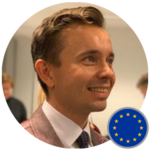
Piotr Wojda
Scientific/Research Officer, European Commission – DG Joint Research Centre
2009, working primarily on geographical data seamless exchanges in the framework of Integrated
Administration and Control Systems (IACS) and Land Parcel Identification Systems (LPIS). Then in
2015, he continued at DG AGRI in Brussels on the very similar subject, linked more to the policy side.
Since 2019, he has re-joined the Commission's Directorate General Joint Research Centre,
coordinating and carrying out focused assessments of both local and diffuse soil contamination in the
context of terrestrial ecosystem services, food safety and sustainable agriculture, and human health,
specifically in relation to CAP Impact Indicators, targets under SDG3, land degradation neutrality and
land restoration strategies. He likes bridging different domains and people.
Piotr Wojda received PhD in Engineering from the University of Liege in Belgium and MSc degrees in
Geology and in Economics from the Warsaw University and the Warsaw School of Economics in
Poland respectively.
SPEAKERS
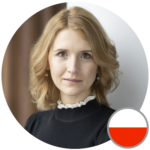
Katarzyna Barańska, PhD
Attorney at Law, Partner, Head of Infrastructure & Environment Kochański & Partners
focus on the investment process and environmental projects.
Katarzyna has considerable experience in renewable energy investments, including both due
diligence and transaction advisory, in addition to representing clients before public administration
authorities. She has advised on the construction and development of wind and photovoltaic farms
and hydroelectric power plants, handling also projects relating to the construction of infrastructure
for mineral extraction.

Travis Barnum
State of Arizona’s Brownfields Coordinator. Arizona Department of Environmental Quality
on over 30 brownfields projects across the state of Arizona. He has assisted several small
and rural communities address blighted properties with environmental assessments and
cleanups. Watch this presentation on how brownfields can eliminate blight and be used to
address a community's needs.
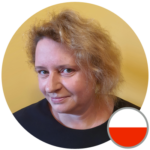
Dr n. biol. Anicenta Bubak
CENIA-EKSPERTYZY
Anicenta BUBAK. PhD. Her areas of interest include environmental toxicology, air, water and soil pollution, children exposure to heavy metals, health risk assessment (HRA) and environmental health impact assessment (EHIA). She has worked on developing helpful tool for health impact assessment (HIA) of planned investments in rural and urban areas. Her qualification focuses on integration HIA procedure in decision making process and stakeholders knowledge improvement (WHO project: The effectiveness of health impact assessment). She has been involved in following international EU projects related to soil and children exposure to heavy metals (2-FUN), health risk assessment posed by metals in soil (I+DARTS), concerning water or groundwater pollution (FOKS), as well as climate changes in relation to human health and wellbeing: BRIDGE and PREPARED.
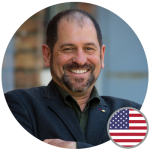
André Chiaradia
Senior Consultant, Lion Environmental

Laurie A. Chilcote
Office Manager - Director of Sales Marketing / Director & Vice President
Cox-Colvin & Associates, Inc. / Vapor Pin Enterprises, Inc. & Vapor Pin Do Brasil
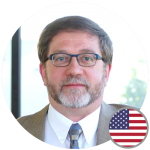
Craig A. Cox, CPG
President/Principal Scientist, Cox-Colvin & Associates, Inc.
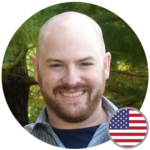
Brad Elkins
Director of Technial Sales, EOS Remediation
Brad helps clients achieve remedial success with EOS Remediation technologies which have been used at 1000s of contaminated sites globally;
-Chlorinated solvents, perchlorate, explosives, heavy metals (hexCr), -bioaugmentation for PCE (&its daughters), 1,4-Dioxane and Petroleum, -Aquifer pH adjustment, -Hydrocarbons (BTEX)
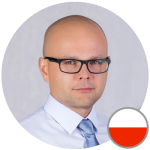
Rafał Hałabura
President Association of the Contaminated Areas Remediation Institute

Joaquim Halen
Customer Success Manager Haemers Technologies
and Customer Success Manager. His main roles are to ensure the follow up of offers, present
the technology, support of ongoing projects on site and from the office.
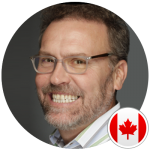
George (Bud) Ivey
President and senior remediation specialist, Ivey International Inc.
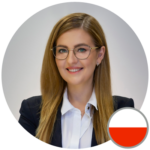
Sylwia Janiszewska
Remediation Department Manager, Remea sp. z o.o.
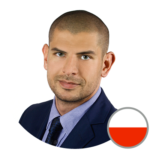
Dawid Jasiński
Geotechnical Engineer | Design Advisor
The Pietrucha Group
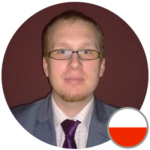
Paweł Kot
Business Development Manager, i2 Analytical
Since almost two years, his main task is developing the business presence of a leading international laboratory company, i2 Analytical, in Poland. Part of his responsibility is acting in an advisory role to customers, using his experience and the capabilities of i2 Analytical to provide support even in the most complex and demanding environmental engineering projects.

Harry O’Neill
President Beacon Environmental
investigations for 30 years, working on projects throughout the United States, as well as internationally
across more than 40 countries spanning all seven continents. Under his direction, Beacon has achieved
ISO/IEC 17025 accreditation for the analysis of soil gas and air samples to target trace concentrations of
organics. In addition, Harry oversaw the implementation of the quality program that enabled Beacon to
become the first NEFAP accredited field sampling and measurement organization (FSMO) in the United
States. Harry has been on the forefront of the acceptance of passive sampling technologies at the
national and international level and has managed the implementation of thousands of soil gas and air
sampling surveys. He is a founding member of the Association of Vapor Intrusion Professionals (AVIP),
is the lead author of ASTM Standard D7758: Standard Practice for Passive Soil Gas Sampling in the
Vadose Zone, and has published and presented findings throughout the United States and internationally
across five continents as an invited speaker.
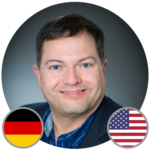
Brant A. Smith, P.E., Ph.D.
Technology Manager, PeroxyChem ©
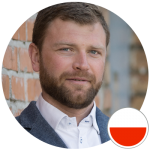
Sebastian Stachowski
Managing director of Lion Environmental
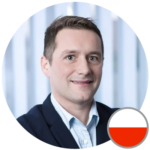
Piotr Surma
Contract Director Remea sp. z o.o.
(geotechnics specialization). He has over 15 years of experience in geotechnics
working in various positions, as a designer, works manager and construction
manager. Currently, he is the Contract Director, responsible for the implementation of
the project "Remediation of degraded and polluted areas in the area of the Kalina
pond in Świętochłowice".
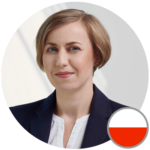
Ewa Szczebak
Senior Environmental Specialist Arcadis Sp. z o.o.
a certified hydrogeologist. She graduated from University of Wrocław with a M.Sc. in
Geology, Hydrogeology and Environmental Protection. Ewa joined Arcadis in 2007, focusing
on environmental site assessment and remediation projects (mainly in-situ remediation).
Ewa is involved is projects with complex hydrogeological and environmental conditions.
Starting from 2014 she is a member of risk-assessment team at Arcadis Poland.
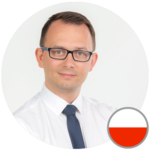
Radosław Piechal
Country Environmental Manager, Panattoni Development Europe sp. z o.o.
He has also completed post graduate studies in geographical information systems at Warsaw
University of Technology. He has a demonstrated history of working in environmental
consultancy, real estate, oil & gas and energy industries. Having environmental and planning
background he was involved in Environmental Impact Assessment (EIA) reports of windfarms
and biogas plants as well as in Environmental, Social and Health Impact Assessment (ESHIA)
reports and permitting of shale gas exploration concession blocks in Poland. He managed and
supervised Phase I, Intrusive geo-environmental Phase II and Phase III EDD audits across
Poland, Slovakia, Russia and Ukraine as well as dozen clean-up projects in Poland. Since 2018
Radosław works in Panattoni Development Europe. From 2021 he acts as a Country
Environmental Manager responsible for environmental site assessments, waste management
and site remediation.
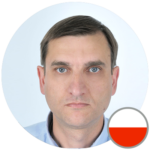
Wojciech Wołkowicz
Researcher, The Polish Geological Institute - National Research Institute
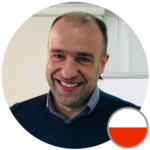
Przemysław Wyskocki
Construction Engineer/Design Assistant at REMEA PL
the area of the Kalina pond in Świętochłowice". Master of Science in Civil Engineering, graduate of the Poznań University of Technology. Since the beginning of his professional career he worked in construction companies in departments responsible for ensuring the quality of works, in the positions of a laboratory technician, laboratory manager, technologist. In March 2020, he joined the team implementing the project "Remediation of degraded and polluted areas surrounding the Kalina pond in Świętochłowice".

André Chiaradia
Senior Consultant, Lion Environmental
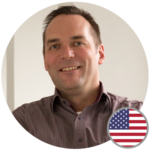
Craig Franzel
Senior Project Manager,CDM Smith
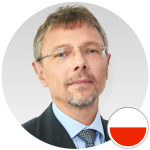
Piotr Kociołek
Environmental director Europe, Panattoni Europe
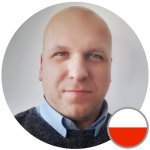
Slawomir Adamczyk
Head of Environmental Damage Prevention, Repair andInformation on the Environment and Environmental Management Department
Position: Head of Environmental Damage Prevention, Repair Department and Information on Environment and Environmental Management (since June 2012). Many years of experience in conducting, supervising proceedings and verification of documents in the field of environmental damage, historical pollution of the earth’s surface, waste management in closed areas, waste storage in a place not intended for this and providing information about the environment.
Previous professional experience: Katowice Geological Enterprise (mainly in geological engineering) Silesian Voivodship Office (environmental protection, groundwater protection)
Education: MA. In Geology (specialization in hydrogeology), University of Silesia in Katowice, Faculty of Earth Sciences in Sosnowiec; postgraduate studies in “Instruments and techniques of environmental management”, AGH University of Science and Technology in Krakow.

Craig A. Cox, CPG
President/Principal Scientist, Cox-Colvin & Associates, Inc.
In addition to his consulting activities, Mr. Cox provides lectures and poster presentations at numerous regional and international conferences on the topics of groundwater contaminant migration and remediation, source area evaluations, and the assessment of vapor intrusion migration pathways. Mr. Cox is the inventor of the Vapor Pin®, a sub-slab soil gas sampling device used worldwide, and is the primary architect of a variety of environmental database applications, including Data InspectorTM.
Mr. Cox received his B.S. and M.S. degrees in Geology and Mineralogy from The Ohio State University and a Professional Degree in Hydrogeology from the Colorado School of Mines. Mr. Cox is a Certified Professional under Ohio EPA’s Voluntary Action Program and a contributing author on reports concerning background metals concentrations in soils published by Ohio EPA. Mr. Cox is also a member of the ASTM Committee developing standards for the long-term monitoring of vapor mitigation systems.
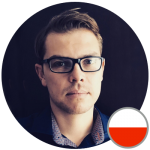
Piotr Bąbała
Contract Director, REMEA

Guido Ebert
Senior Business Development Manager,CDM Smith
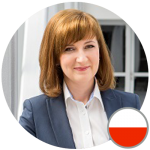
Aneta Chochorek
Managing Director at WESSLING Polska sp. z o.o
Associated with the company since 2008, where she began her career as a Laboratory Manager. She was responsible for the design, construction, implementation of the quality management system and management of the new WESSLING Polska environmental laboratory in Krakow. Since 2013, he has been working as the Managing Director, overseeing the work of environmental and food laboratories in Poland. Previously, she worked at the Laboratory of the Provincial Inspectorate for Environmental Protection in Krakow.
She has been associated with the environmental protection industry for over 20 years.
She is a graduate of the Faculty of Chemistry of the Jagiellonian University.
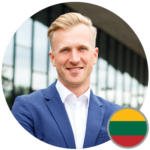
Martynas Paškevičius
Partner, ESSPO
